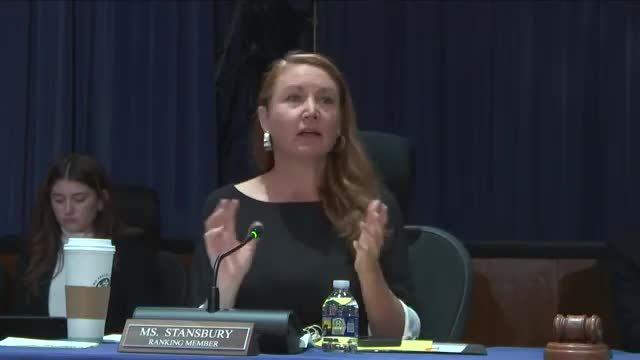Congress debates federal real estate disposal amid economic downturn concerns
April 08, 2025 | Oversight and Reform: House Committee, Standing Committees - House & Senate, Congressional Hearings Compilation
This article was created by AI summarizing key points discussed. AI makes mistakes, so for full details and context, please refer to the video of the full meeting. Please report any errors so we can fix them. Report an error »

In a recent meeting of the U.S. House Committee on Oversight and Government Reform, lawmakers engaged in a heated discussion about the federal government's real estate portfolio and the pressing need for reform. The backdrop of this dialogue was a stark reality: the federal government is grappling with an excess of properties, many of which are underutilized or vacant, leading to significant financial burdens on taxpayers.
As the committee convened, the atmosphere was charged with urgency. Members highlighted the inefficiencies of maintaining over 1,500 federal buildings and 7,500 leases, which collectively encompass more than 511 million square feet of office space. The conversation quickly turned to the implications of this surplus, particularly in light of the current economic climate, which many described as unfavorable for real estate transactions.
One key point of contention was the proposed method for disposing of federal properties. Critics voiced concerns that a rushed approach, likened to a "fire sale," could lead to undervaluation of prime real estate, especially in high-demand areas like Washington, D.C. Lawmakers emphasized the importance of a strategic and orderly process, arguing that selling properties in a down market would not serve the interests of taxpayers. "Selling into a down market is not a sagacious plan," one witness cautioned, underscoring the potential for significant financial loss.
The discussion also touched on the broader economic implications of these decisions. With many federal agencies reportedly using only a fraction of their available space—some as low as 25%—the need for a reevaluation of federal real estate needs was clear. Lawmakers pointed out that the ongoing maintenance costs for these underutilized properties could run into the billions, further straining taxpayer resources.
Amidst the debate, there were calls for transparency and accountability in the disposal process. Some members expressed skepticism about the motivations behind the proposed changes, suggesting that they could disproportionately benefit wealthy developers at the expense of the public interest. "This is about disposing of federal property and a fire sale to make the wealthy more wealthy," one representative asserted, reflecting a broader concern about equity in government actions.
As the meeting concluded, the committee members were left with a complex challenge: how to effectively manage the federal real estate portfolio in a way that balances fiscal responsibility with the needs of the American public. The discussions highlighted a critical juncture for federal property management, one that could shape the economic landscape for years to come. With data collection set to begin in July, the coming months will be pivotal in determining the future of federal real estate and its impact on taxpayers nationwide.
As the committee convened, the atmosphere was charged with urgency. Members highlighted the inefficiencies of maintaining over 1,500 federal buildings and 7,500 leases, which collectively encompass more than 511 million square feet of office space. The conversation quickly turned to the implications of this surplus, particularly in light of the current economic climate, which many described as unfavorable for real estate transactions.
One key point of contention was the proposed method for disposing of federal properties. Critics voiced concerns that a rushed approach, likened to a "fire sale," could lead to undervaluation of prime real estate, especially in high-demand areas like Washington, D.C. Lawmakers emphasized the importance of a strategic and orderly process, arguing that selling properties in a down market would not serve the interests of taxpayers. "Selling into a down market is not a sagacious plan," one witness cautioned, underscoring the potential for significant financial loss.
The discussion also touched on the broader economic implications of these decisions. With many federal agencies reportedly using only a fraction of their available space—some as low as 25%—the need for a reevaluation of federal real estate needs was clear. Lawmakers pointed out that the ongoing maintenance costs for these underutilized properties could run into the billions, further straining taxpayer resources.
Amidst the debate, there were calls for transparency and accountability in the disposal process. Some members expressed skepticism about the motivations behind the proposed changes, suggesting that they could disproportionately benefit wealthy developers at the expense of the public interest. "This is about disposing of federal property and a fire sale to make the wealthy more wealthy," one representative asserted, reflecting a broader concern about equity in government actions.
As the meeting concluded, the committee members were left with a complex challenge: how to effectively manage the federal real estate portfolio in a way that balances fiscal responsibility with the needs of the American public. The discussions highlighted a critical juncture for federal property management, one that could shape the economic landscape for years to come. With data collection set to begin in July, the coming months will be pivotal in determining the future of federal real estate and its impact on taxpayers nationwide.
View full meeting
This article is based on a recent meeting—watch the full video and explore the complete transcript for deeper insights into the discussion.
View full meeting